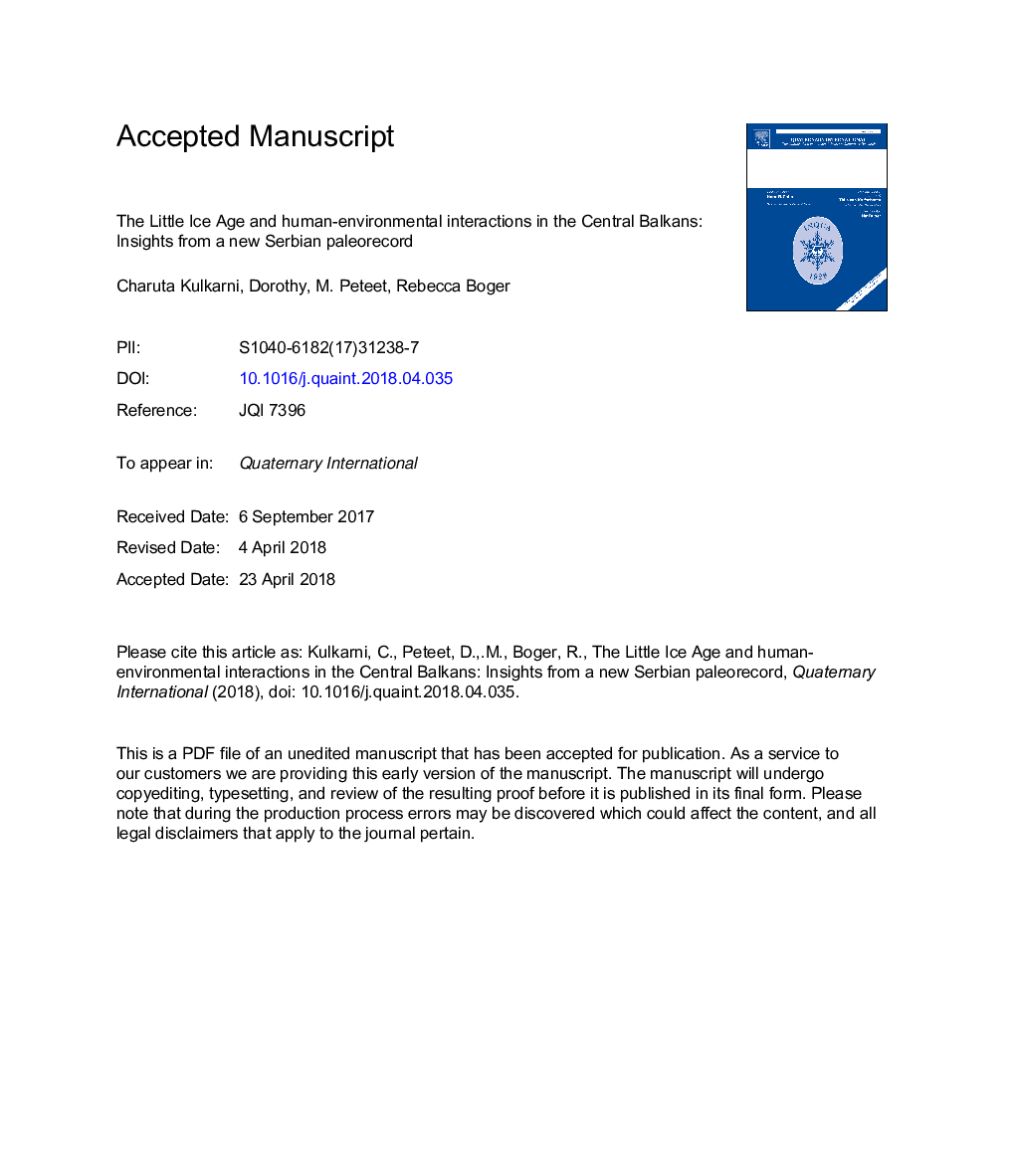| Article ID | Journal | Published Year | Pages | File Type |
|---|---|---|---|---|
| 7449146 | Quaternary International | 2018 | 60 Pages |
Abstract
This paper presents a 600-year well-dated, high-resolution Central Balkan paleo-record including the Little Ice Age (LIA; 1450-1850 CE). Utilizing pollen-based REVEALS modeling estimates, geochemical indicators, rarefaction analyses and the AMS 14C-based Bacon age model, this first-hand record from the Sava Basin reveals the transformation of the Central Balkan landscape involving linkages between changing climatic and socio-political regimes. The pre-LIA interval (1370-1418 CE) in the Sava Region reveals a wooded steppe and increased cultivation under warmer/stable climatic and socio-political conditions. In contrast, the LIA interval in the region is expressed through continuous transitions between forest and grassland, extensive land erosion and stressed agriculture, potentially as a collective artifact of the climatic variability and human impact associated with socio-political stressors of the time. The post-LIA/Industrial Era interval (1850-2012 CE) in the Sava Region shows an overall increase in woodland as well as agriculture following the exit of the Ottomans. However, increased population pressures and the subsequent onset of the Industrial Revolution as well as increased trade led to intense deforestation throughout the 20th century, which continued during the Socialist period.
Keywords
Related Topics
Physical Sciences and Engineering
Earth and Planetary Sciences
Geology
Authors
Charuta Kulkarni, Dorothy M. Peteet, Rebecca Boger,
